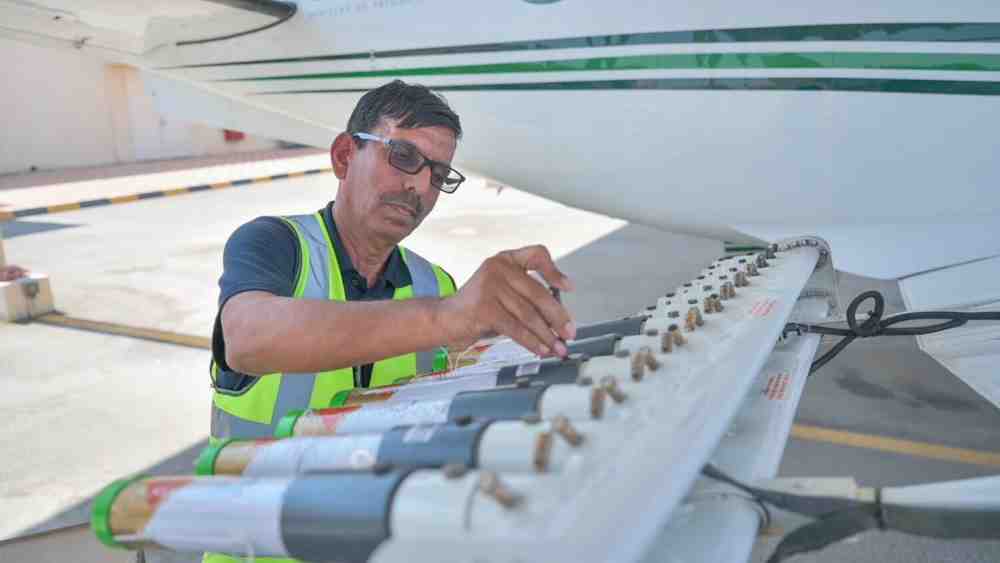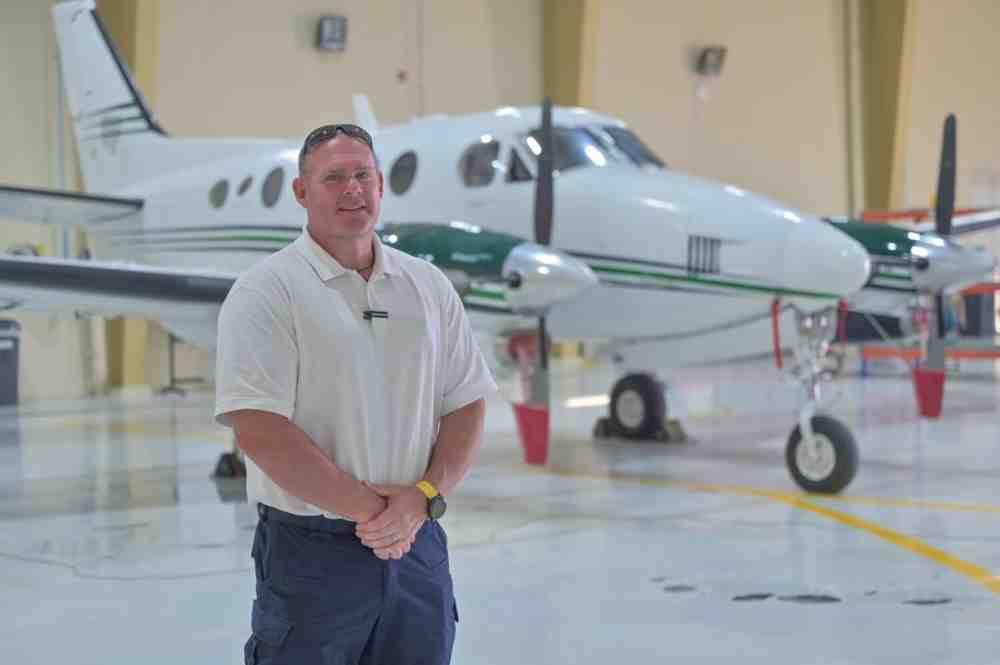Captain Mark Newman has served the National Centre of Meteorology (NCM) for a remarkable 10 years, specialising in piloting cloud-seeding aircraft. However, his expertise extends beyond his decade of service. Newman is among a group of trained pilots who collaborate closely with meteorologists and cloud-seeding experts, working tirelessly to execute the UAE’s rain enhancement missions. In this article, we delve into the intricacies of their operations and the fascinating science of cloud seeding.
Unveiling the Weather Map Analysis
Each day, during the morning shift, NCM’s cloud-seeding specialists kick start their day by meticulously examining weather maps. Their goal? To identify optimal conditions for cloud-seeding endeavours. This preliminary analysis concentrates on pinpointing areas where clouds are likely to form, ensuring precise timing, a crucial factor in cloud seeding’s success. With a typical mission spanning up to three hours, the team covers the entirety of the UAE’s borders.

A Well-Defined Plan
Based on this analysis, a cloud-seeding plan is devised for the day in question and the following three days. This foresight enables pilots like Newman to be on standby status, ready to embark on their missions at a moment’s notice. The preparation process commences by loading the designated aircraft with cloud-seeding materials, housed in specialised racks.

Constant Vigilance
Throughout this process, the operator remains vigilant, consistently monitoring satellite images and weather radar visuals to ensure precision in execution. As clouds start to form, their locations are identified, and a take-off order is issued, guided by radar images to determine the optimal cloud position for seeding.

Pilot Action: The Dance with the Clouds
Once the location is confirmed, a seeding command is issued. The operations centre maintains constant communication with the pilots, guiding the aircraft to additional cloud sites for further operations. Pilots, like Newman, describe the process of flying to a target cloud and releasing salt particles from flares beneath the cumulus cloud. This enhances cloud conductivity, ultimately leading to rainfall.
The Science Behind Cloud Seeding
Cloud seeding involves the release of sodium chloride, commonly known as regular salt, into cloud updrafts. Salt particles serve as nuclei that attract moisture, leading to the growth of droplets through coalescence. These droplets become too large for gravity to sustain, resulting in rainfall. The effect takes between 15 minutes to an hour, transforming clouds into sources of precious water.

Winter Operations Surpass Summer Figures
Interestingly, cloud-seeding missions in the UAE are more prevalent during the winter months, outnumbering those during summer. The UAE boasts 12 pilots assigned to missions with four aircraft dedicated to cloud-seeding operations. Summer missions typically occur from the afternoon until sunset, whereas winter missions extend from sunrise to sunset or sunset to the following day’s sunrise.
Environmentally Friendly Materials
In the UAE, environmentally friendly hygroscopic materials, including potassium chloride and sodium chloride, are commonly used for cloud seeding. Recent experiments have explored the use of novel nanomaterials, like hygroscopic and hydrophilic materials, which have demonstrated greater effectiveness in enhancing precipitation compared to conventional materials.
Enhancing Precipitation
Studies have shown that cloud seeding can increase water extraction from clouds by 10-15% in turbid atmospheric conditions during the summers of 2004 and 2005. In cleaner atmospheres, this enhancement ratio could potentially reach up to 25%, highlighting the ongoing advancements in this remarkable field of science.

Captain Mark Newman and his fellow pilots play a pivotal role in steering the UAE’s rain enhancement missions, ensuring a more sustainable water future for the nation. Their expertise and dedication to cloud seeding underscore the innovative solutions being explored to meet the region’s water needs.
